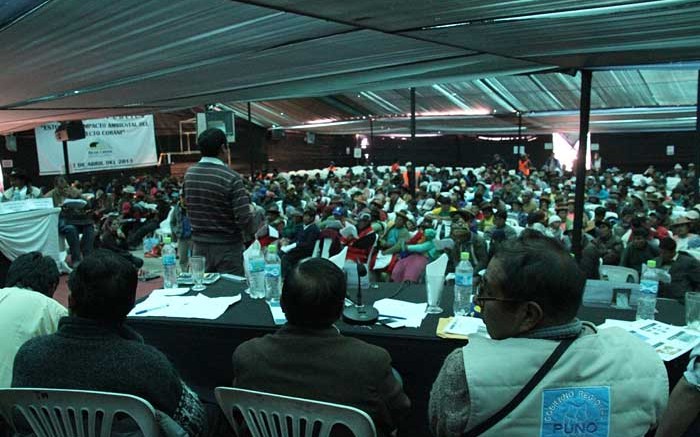VANCOUVER — It has been a two-year journey for Peruvian-focused junior Bear Creek Mining (TSXV: BCM; US-OTC: BCEKF) and its flagship, wholly owned Corani silver-lead-zinc project, located 160 km southeast of Cusco. But after concluding public hearings, it looks like the company is closing in on approval of its environmental and social impact assessment (ESIA).
Bear Creek completed Corani’s public hearings in April, which culminated in a life-of-mine investment agreement with the District of Carabaya, as well as five surrounding communities: Corani, Chacaconiza, Quelcaya, Isivilla and Aymana. Under the agreement — scheduled to come into effect this year — US$1.6 million will be paid annually into a trust to fund local projects.
“This agreement will provide our communities the opportunity to implement long-needed social investment projects, which will be used for developing our entire district,” said Corani’s Mayor Edmundo Caceres. “Projects such as education, health and the improvement of alpaca wool will become a reality, thanks to the use of the proceeds of this agreement. We look forward to working with Bear Creek in partnership as the project advances.”
The company provided another update regarding its permitting process on Aug. 28, when it submitted its responses to questions posed by the Ministry of Energy and Mines. Bear Creek says that the 147 comments addressed in its response constituted a “low number, indicating the strength of the original technical report.” The company says that the submission sets the stage for an ESIA approval by as early as July.
Bear Creek released its most recent feasibility study on Corani back in November 2011. The US$574-million development holds proven and probable reserves totalling 156 million tonnes grading 53.8 grams silver per tonne, 0.9% lead and 0.49% zinc. Contained metals stand at 270 million oz. silver, 3.1 billion lb. lead and 1.7 billion lb. zinc.
Bear Creek’s proposed mining sequence pulls ore from higher-grade starter pits in the early years and moves to lower-grade areas later in production. Corani’s mineralization is classified as low-sulphidation, epithermal deposits hosted in stockworks, breccia veins and fractures.
A 22,500-tonne-per-day mill would crank out 14.7 million equivalent oz. silver each year, with high-grade starter pits boosting annual production over an initial five-year run to 23 million oz. Having a bit of a dated feasibility study benefits Bear Creek, considering recent metal markets. Assuming US$18 per oz. silver, US85¢ per lb. lead and US85¢ per lb. zinc, Corani returns a US$463 million net present value at a 5% discount rate and a 17.6% internal rate of return.
According to BMO Capital Markets, it is likely Corani’s capital budget has jumped over the past two years, with BMO modelling the cost of the project at US$700 million.
Bear Creek remains in an enviable cash position, with US$57 million in net working capital at the end of June. The company’s shares have been on a major run owing to Corani’s de-risking, and a bounce back in silver prices. Bear Creek has jumped 108% — or $1.30 since late June — en route to a $2.50-per-share close at press time. The company has traded within a 52-week window of $1.17 and $3.81, and maintains 92 million shares outstanding for a $230-million market capitalization.


Be the first to comment on "Bear Creek nears permitting milestone at Corani"